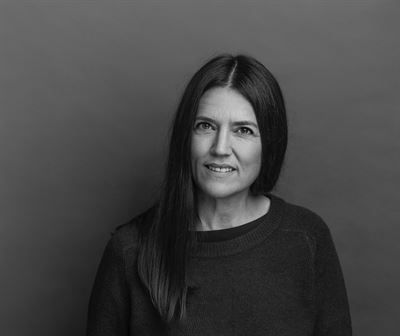Marknadsnyheter
Calquence approved in the US for adult patients with chronic lymphocytic leukaemia
Two Phase III Calquence trials demonstrated superior progression-free survival across multiple settings while maintaining favourable tolerability
Calquence combined with obinutuzumab and as monotherapy reduced the risk of disease progression or death by 90% and 80%, respectively in ELEVATE-TN
AstraZeneca today announced that the US Food and Drug Administration (FDA) has approved Calquence (acalabrutinib) for adult patients with chronic lymphocytic leukaemia (CLL) or small lymphocytic lymphoma (SLL).1 The US approval was granted under the FDA’s Real-Time Oncology Review and newly established Project Orbis programmes.
The approval is based on positive results from the interim analyses of two Phase III clinical trials, ELEVATE-TN in patients with previously untreated CLL and ASCEND in patients with relapsed or refractory CLL. Together, the trials showed that Calquence in combination with obinutuzumab or as a monotherapy significantly reduced the relative risk of disease progression or death versus the comparator arms in both 1st-line and relapsed or refractory CLL. Across both trials, the safety and tolerability of Calquence were consistent with its established profile.1
Dave Fredrickson, Executive Vice President, Oncology Business Unit said: “With over 20,000 new cases anticipated this year in the US alone, today’s approval of Calquence provides new hope for patients with one of the most common types of adult leukaemia, offering outstanding efficacy and a favourable tolerability profile. The chronic lymphocytic leukaemia patient population is known to face multiple comorbidities, and tolerability is a critical factor in their treatment.”
Dr Jeff Sharman, Director of Research at Willamette Valley Cancer Institute, Medical Director of Hematology Research for The US Oncology Network, and a lead author of the ELEVATE-TN trial, said: “Tolerability remains an issue in the current treatment landscape of chronic lymphocytic leukaemia, which may require ongoing therapy for many years. In the ELEVATE-TN and ASCEND trials comparing Calquence to commonly used treatment regimens, Calquence demonstrated a clinically meaningful improvement in progression-free survival in patients across multiple settings, while maintaining its favourable tolerability and safety profile.”
The results of the interim analysis of the ELEVATE-TN trial will be presented at the upcoming American Society of Hematology congress.2
The trial showed a statistically significant and clinically meaningful improvement in progression-free survival (PFS) for patients treated with either Calquence in combination with obinutuzumab or Calquence monotherapy versus chlorambucil chemotherapy plus obinutuzumab, a current standard-of-care combination used in the control arm.1
In the Calquence combination arm, risk of disease progression or death was reduced by 90% (HR 0.10; 95% CI, 0.06-0.17, p<0.0001) and in the monotherapy arm it was reduced by 80% (HR 0.20; 95% CI, 0.13-0.30, p<0.0001).1
The median time to disease progression for patients treated with Calquence in combination with obinutuzumab or as a monotherapy has not yet been reached versus 22.6 months (95% CI, 20-28) for chlorambucil plus obinutuzumab.1
ELEVATE-TN safety overview (most common ARs, ≥15%):1
| Adverse reaction | Calquence plus obinutuzumab (n=178) |
Calquence monotherapy (n=179) |
Chlorambucil plus obinutuzumab (n=169) |
|||
| Any | Grade ≥3 | Any | Grade ≥3 |
Any | Grade ≥3 |
|
| Infection† | 69% | 22% | 65% | 14% | 46% | 13% |
| Neutropenia† | 53% | 37% | 23% | 13% | 78% | 50% |
| Anemia† | 52% | 12% | 53% | 10% | 54% | 14% |
| Thrombocytopenia† | 51% | 12% | 32% | 3.4% | 61% | 16% |
| Headache | 40% | 1.1% | 39% | 1.1% | 12% | 0 |
| Diarrhoea | 39% | 4.5% | 35% | 0.6% | 21% | 1.8% |
| Musculoskeletal pain† | 37% | 2.2% | 32% | 1.1% | 16% | 2.4% |
| Fatigue | 34% | 2.2% | 23% | 1.1% | 24% | 1.2% |
| Bruising† | 31% | 0 | 21% | 0 | 5% | 0 |
| Rash† | 26% | 2.2% | 25% | 0.6% | 9% | 0.6% |
| Arthralgia | 22% | 1% | 16% | 0.6% | 4.7% | 1.2% |
| Dizziness | 20% | 0 | 12% | 0 | 7% | 0 |
| Hemorrhage† | 20% | 1.7% | 20% | 1.7% | 6% | 0 |
| Nausea | 20% | 0 | 22% | 0 | 31% | 0 |
| Lymphocytosis† | 12% | 11% | 16% | 15% | 0.6% | 0.6% |
†Includes multiple ADR terms.
In patients treated with the combination of Calquence plus obinutuzumab, adverse reactions (ARs) led to treatment discontinuation in 11% of patients and a dose reduction of Calquence in 7% of patients. In the monotherapy arm, ARs led to discontinuation in 10% and dose reduction in 4% of patients.1 In the control arm, ARs led to regimen discontinuation in 14% of patients with a dose reduction of chlorambucil in 28% of patients.3 There were no dose reductions for obinutuzumab.1,3
In 1,029 patients with haematologic malignancies who were treated with Calquence 100mg approximately every 12 hours across multiple clinical trials, where 88% received treatment for at least six months and 79% received treatment for at least one year, serious or Grade ≥3 infections occurred in 19%, and Grade 3 atrial fibrillation and flutter occurred in 1.1% of patients. In the same patient population, major haemorrhage occurred in 3.0% (serious or Grade ≥3 bleeding or any central nervous system bleeding), with fatal haemorrhage occurring in 0.1% of patients. Second primary malignancies (all grades) including skin cancers occurred in 12% of patients.1
The US approval is among the first to be granted under Project Orbis, an initiative of the US FDA Oncology Center of Excellence, which provides a framework for concurrent submission and review of oncology medicines among international partners. The FDA, the Australian Therapeutic Goods Administration, and Health Canada collaborated on this review. 4
About Calquence
In the US, Calquence (acalabrutinib) is indicated for the treatment of adult patients with chronic lymphocytic leukaemia (CLL)/small lymphocytic lymphoma (SLL). In the US, Canada, Australia, Brazil, Qatar, the United Arab Emirates, Mexico, Argentina, Singapore, Chile, and recently India, Calquence is indicated for adult patients with mantle cell lymphoma (MCL) who have received at least one prior therapy. Approved under accelerated review in the US, continued approval for previously treated MCL is contingent upon verification and confirmation of clinical benefit in confirmatory trials.
Calquence is a next-generation selective inhibitor of Bruton’s tyrosine kinase (BTK). Calquence binds covalently to BTK, thereby inhibiting its activity.1,5,6,7 In B-cells, BTK signalling results in activation of pathways necessary for B-cell proliferation, trafficking, chemotaxis, and adhesion.1
As part of an extensive clinical development programme, AstraZeneca and Acerta Pharma are currently evaluating Calquence in 23 company-sponsored clinical trials. Calquence is being developed for the treatment of multiple B-cell blood cancers including CLL, MCL, diffuse large B-cell lymphoma, Waldenström macroglobulinaemia and follicular lymphoma and other haematologic malignancies. Several Phase III clinical trials in CLL are ongoing, including ASCEND, ELEVATE-TN, ELEVATE-RR (ACE-CL-006) evaluating Calquence versus ibrutinib in patients with previously treated high-risk CLL, and ACE-CL-311 evaluating Calquence in combination with venetoclax and with/without obinutuzumab versus chemoimmunotherapy in patients with previously untreated CLL without 17p deletion or TP53 mutation.
About ELEVATE-TN
ELEVATE-TN (ACE-CL-007) is a randomised, multicentre, open-label Phase III trial evaluating the safety and efficacy of Calquence in combination with obinutuzumab, a CD20 monoclonal antibody, or Calquence alone versus chlorambucil, a chemotherapy, in combination with obinutuzumab in previously untreated patients with CLL. In the trial, 535 patients were randomised (1:1:1) into three arms. Patients in the first arm received chlorambucil in combination with obinutuzumab. Patients in the second arm received Calquence (100mg twice daily until disease progression or unacceptable toxicity) in combination with obinutuzumab. Patients in the third arm received Calquence monotherapy (100mg twice daily until disease progression or unacceptable toxicity).1,8
The primary endpoint is PFS in the Calquence and obinutuzumab arm compared to the chlorambucil and obinutuzumab arm, assessed by an independent review committee (IRC), and a key secondary endpoint is IRC-assessed PFS in the Calquence monotherapy arm compared to the chlorambucil and obinutuzumab arm. Other secondary endpoints include objective response rate, time to next treatment and overall survival.1,8
About ASCEND
ASCEND (ACE-CL-309) is a global, randomised, multicentre, open-label Phase III trial evaluating the efficacy of Calquence in previously treated patients with CLL. In the trial, 310 patients were randomised (1:1) into two arms. Patients in the first arm received Calquence monotherapy (100mg twice daily until disease progression or unacceptable toxicity). Patients in the second arm received investigator’s choice of either rituximab, a CD20 monoclonal antibody, in combination with idelalisib, a PI3K inhibitor, or rituximab in combination with bendamustine, a chemotherapy.1,9
The primary endpoint is PFS assessed by an IRC, and key secondary endpoints include physician-assessed PFS, IRC- and physician-assessed overall response rate and duration of response, as well as overall survival, patient-reported outcomes and time to next treatment.1,9
About CLL
Chronic lymphocytic leukaemia (CLL) is one of the most common types of leukaemia in adults, with an estimated 105,000 new cases globally each year and 20,720 new cases in the US in 2019, and the number of people living with CLL is expected to grow with improved treatment as patients live longer with the disease.10,11,12,13 In CLL, too many blood stem cells in the bone marrow become abnormal lymphocytes and these abnormal cells have difficulty fighting infections.10 As the number of abnormal cells grows there is less room for healthy white blood cells, red blood cells and platelets.10 This could result in anaemia, infection and bleeding.10 B-cell receptor signalling through BTK is one of the essential growth pathways for CLL.
About AstraZeneca in haematology
Leveraging its strength in oncology, AstraZeneca has established haematology as one of four key oncology disease areas of focus. The Company’s haematology franchise includes two US FDA-approved medicines and a robust global development programme for a broad portfolio of potential blood cancer treatments. Acerta Pharma serves as AstraZeneca’s haematology research and development arm. AstraZeneca partners with like-minded science-led companies to advance the discovery and development of therapies to address unmet need.
About AstraZeneca in oncology
AstraZeneca has a deep-rooted heritage in oncology and offers a quickly-growing portfolio of new medicines that has the potential to transform patients’ lives and the Company’s future. With at least six new medicines to be launched between 2014 and 2020, and a broad pipeline of small molecules and biologics in development, the Company is committed to advance oncology as a key growth driver for AstraZeneca focused on lung, ovarian, breast and blood cancers. In addition to AstraZeneca’s main capabilities, the Company is actively pursuing innovative partnerships and investments that accelerate the delivery of our strategy, as illustrated by the investment in Acerta Pharma in haematology.
By harnessing the power of four scientific platforms – Immuno-Oncology, Tumour Drivers and Resistance, DNA Damage Response and Antibody Drug Conjugates – and by championing the development of personalised combinations, AstraZeneca has the vision to redefine cancer treatment and, one day, eliminate cancer as a cause of death.
About AstraZeneca
AstraZeneca is a global, science-led biopharmaceutical company that focuses on the discovery, development and commercialisation of prescription medicines, primarily for the treatment of diseases in three therapy areas – Oncology, Cardiovascular, Renal and Metabolism, and Respiratory. AstraZeneca operates in over 100 countries and its innovative medicines are used by millions of patients worldwide. Please visit astrazeneca.com and follow the Company on Twitter @AstraZeneca.
| Media Relations | ||
| Gonzalo Viña | +44 203 749 5916 | |
| Rob Skelding | Oncology | +44 203 749 5821 |
| Rebecca Einhorn | Oncology | +1 301 518 4122 |
| Matt Kent | BioPharmaceuticals | +44 203 749 5906 |
| Jennifer Hursit | Other | +44 203 749 5762 |
| Christina Malmberg Hägerstrand | Sweden | +46 8 552 53 106 |
| Michele Meixell | US | +1 302 885 2677 |
| Investor Relations | ||
| Thomas Kudsk Larsen | +44 203 749 5712 | |
| Henry Wheeler | Oncology | +44 203 749 5797 |
| Christer Gruvris | BioPharmaceuticals (CV, metabolism) | +44 203 749 5711 |
| Nick Stone | BioPharmaceuticals (Renal), ESG | +44 203 749 5716 |
| Josie Afolabi | BioPharmaceuticals (Respiratory), other medicines | +44 203 749 5631 |
| Craig Marks | Finance, fixed income | +44 7881 615 764 |
| Jennifer Kretzmann | Corporate access, retail investors | +44 203 749 5824 |
| US toll-free | +1 866 381 72 77 |
References
1. CALQUENCE® (acalabrutinib) [prescribing information]. Wilmington, DE; AstraZeneca Pharmaceuticals LP; 2019.
2. Sharman JP, et al. ELEVATE TN: Phase 3 Study of Acalabrutinib Combined with Obinutuzumab (O) or Alone Vs O Plus Chlorambucil (Clb) in Patients (Pts) with Treatment-Naive Chronic Lymphocytic Leukemia (CLL). Abstract 31 at: American Society of Hematology 2019 Annual Meeting and Exposition. Available online. Accessed November 2019.
3. Data on File. REF-64711. AstraZeneca Pharmaceuticals LP, Wilmington, DE.
4. US Food and Drug Administration. Project Orbis. Available online. Accessed November 2019.
5. Wu J, Zhang M & Liu D. Acalabrutinib (ACP-196): a selective second-generation BTK inhibitor. J Hematol Oncol. 2016;9(21).
6. Khan Y & O’Brien S. Acalabrutinib and its use in treatment of chronic lymphocytic leukemia. Future Oncol. 2018;15(6).
7. Byrd JC, et al. Acalabrutinib (ACP-196) in Relapsed Chronic Lymphocytic Leukemia. N Engl J Med. 2016; 374:323-332.
8. ClinicalTrials.gov. Elevate CLL TN: Study of Obinutuzumab + Chlorambucil, Acalabrutinib (ACP-196) + Obinutuzumab, and Acalabrutinib in Subjects With Previously Untreated CLL. NCT02475681. Available online. Accessed November 2019.
9. ClinicalTrials.gov. A Study of Acalabrutinib vs Investigator’s Choice of Idelalisib Plus Rituximab or Bendamustine Plus Rituximab in R/R CLL. NCT02970318. Available online. Accessed November 2019.
10. National Cancer Institute. Chronic Lymphocytic Leukemia Treatment (PDQ®)–Patient Version. Available online. Accessed November 2019.
11. Global Burden of Disease Cancer Collaboration. Global, Regional, and National Cancer Incidence, Mortality, Years of Life Lost, Years Lived With Disability, and Disability-Adjusted Life-Years for 29 Cancer Groups, 1990 to 2016. JAMA Oncol. 2018;4(11):1553-1568.
12. American Cancer Society. Key Statistics for Chronic Lymphocytic Leukemia. Available online. Accessed November 2019.
13. Jain N, et al. Prevalence and Economic Burden of Chronic Lymphocytic Leukemia (CLL) in the Era of Oral Targeted Therapies. Blood. 2015;126:871.
Marknadsnyheter
Regeringen föreslår lättnader i byggkraven för studentbostäder
Regeringen har beslutat om en lagrådsremiss med förslag till lättnader i byggkraven för studentbostäder. Syftet är att öka möjligheterna till flexibilitet vid byggandet.
– På många studieorter är det svårt för studenter att hitta boende. Därför behöver byggregelverket förenklas. Syftet är att möjliggöra för fler studentbostäder genom sänkta byggkostnader och ökad flexibilitet, säger infrastruktur- och bostadsminister Andreas Carlson.
Förslaget innebär att det blir möjligt att göra undantag från kraven på tillgänglighet och användbarhet i en byggnad som innehåller studentbostäder. Undantagen ska kunna tillämpas vid både nyproduktion och vid ändring av en byggnad.
Det ska vara möjligt att göra undantag för högst 80 procent av studentbostäderna i ett byggprojekt. Minst 20 procent av studentbostäderna ska fortfarande uppfylla gällande krav på tillgänglighet och användbarhet för personer med nedsatt rörelse- eller orienteringsförmåga.
Lagändringen ger större flexibilitet vid byggande av studentbostäder och skapar fler tänkbara sätt att utforma planlösningar. Till exempel kan bostadsytan minskas och fler bostäder rymmas inom en given yta.
De föreslagna undantagen ska inte hindra personer med funktionsnedsättning att vara delaktiga i sociala sammanhang. En studentbostad som omfattas av undantagen ska kunna besökas av en person med nedsatt rörelse- eller orienteringsförmåga.
Regeringen breddar också definitionen av studentbostäder till att inkludera all vuxenutbildning för att göra det möjligt för fler kommuner att erbjuda studentbostäder.
Förslagen föreslås träda i kraft den 1 juli 2025.
Lagrådsremissen: Lättnader i byggkraven för studentbostäder – Regeringen.se
Presskontakt
Ebba Gustavsson
Pressekreterare hos infrastruktur- och bostadsminister Andreas Carlson
Telefon (växel) 08-405 10 00
Mobil 076-12 70 488
ebba.gustavsson@regeringskansliet.se
Marknadsnyheter
“Vi behöver tillsammans enas om vettiga avtal, som sätter standard för branschen”


Sveriges Radios Kulturnytt gör just nu en mycket välkommen granskning av villkoren i musikbranschen. Igår lyftes artisten Siw Malmkvists situation med ett avtal som inte förnyats på över 60 år. Hennes situation är tyvärr långt ifrån unik. Musikerförbundet har länge uppmärksammat att majorbolagen fortsätter att betala extremt låga royaltynivåer till artister vars kontrakt skrevs på 1960-talet – en tid då digital streaming inte existerade.
– Jag kan intyga att artisterna som talar ut i P1 är långt ifrån ensamma om sin situation och vi uppmanar deras artistkollegor att gå ut med sitt tydliga stöd till de som vågar bryta tystnaden om oskäliga ersättningar, säger Musikerförbundets ordförande Karin Inde.
Musiker och artister skapar det värde som skivbolagen tjänar pengar på, men ändå ser vi gång på gång hur bolagen behåller stora delar av intäkterna. Att en av Sveriges mest folkkära artister, med en karriär som sträcker sig över decennier, fortfarande har en oskälig royalty är ett tydligt bevis på branschens obalans.
– Tystnadskulturen kring prissättning är enbart bra för bolagen. Både artister och musiker skulle verkligen tjäna på att dela med sig till varandra om hur betalningar och dealar verkligen ser ut. Förstås i trygga, egna rum. Det är bara bolagen som tjänar på att vi inte pratar med varandra om pengar, säger Karin Inde.
Stort tack till de modiga artister som ser till att lyfta problematiken! För att vi ska få till en i grunden mer rättvis musikbransch behöver de stora parterna i sammanhanget – skivbolagen, musikerna och artisterna – göra som de flesta andra svenska branscher lyckas med:
– Vi behöver tillsammans enas om vettiga och balanserade avtal, som sätter standard för branschen. Musikerförbundet är redo att göra vår del i arbetet för bättre villkor i musikbranschen, frågan är om skivbolagen är redo, säger Karin Inde.
Karin Inde
Förbundsordförande
karin.inde@musikerforbundet.se
+46 (0)704447228
Musikerförbundet är fackförbundet för professionella musiker och artister. Vi arbetar för förbättrade upphovsrättsliga och arbetsrättsliga villkor och för att våra medlemmar ska få en rättvis del av de värden de skapar i samhället.
Marknadsnyheter
Bönor från egen kaffeskog, sump till jord – Viking Lines nya kaffe gör gott på många olika sätt


Viking Lines resenärer dricker varje år 8,5 miljoner koppar kaffe. Nu satsar rederiet på ett helt nytt kaffe som ger minskade klimatutsläpp och bättre levnadsvillkor för odlarna. Kaffet från Slow Forest odlas på rederiets egen odling i Laos utan kemiska gödningsmedel, handplockas och rostas därefter i Danmark.
Allt kaffe som serveras på Viking Lines fartyg är nu hållbart producerat Slow Forest-kaffe, odlat på rederiets 75 hektar stora odling på högplatåerna i Laos och rostat i Danmark. Kaffeplantorna odlas bland träd på återbeskogad mark, i stället för på traditionellt skövlade plantager. Viking Lines odling ligger i en kolsänka där målsättningen är att plantera 30 000 träd, vilket innebär nästan 400 träd per hektar. Kaffeskogen förbättrar också den lokala biologiska mångfalden i området.
Odlingen, bearbetningen och rostningen av kaffet hanteras av Slow Forest Coffee. För företaget är det viktigt att produktionskedjan är rättvis och transparent. Utöver miljöfördelarna erbjuder Slow Forest bättre lönevillkor och sjukersättning för byns odlare.
”Den traditionella kaffetillverkningens koldioxidavtryck är stort och merparten av intäkterna går till Europa i stället för produktionsländerna. Vi ville göra annorlunda. Våra kunder vill göra hållbara val, och nu kan de njuta av sitt kaffe med bättre samvete än någonsin tidigare,” berättar Viking Lines restaurangchef Janne Lindholm.
Bönorna till Slow Forest-kaffet får sakta mogna i skuggan av träden, utan kemiska gödningsmedel. De plockas också för hand, vilket avsevärt förbättrar kaffets kvalitet och smak. Viking Lines nya kaffe består till 100 procent av Arabica-bönor, med en balanserad syrlighet samt smak av nötter och choklad. Rostningsprofilen har skapats av den världsberömda danska rostningsmästaren Michael de Renouard.
”Vi valde en mörkrost till fartygets kaffe, vilket passar både finländarnas och svenskarnas nuvarande smakpreferenser gällande rostning. Finländarnas smak gällande kaffe har under de senaste åren utvecklats mot en mörkare rostning. Innan vi gjorde vårt slutgiltiga val testades det nya kaffet i Viking Cinderellas bufférestaurang och personalmässen – och båda testgrupperna gav toppbetyg. Då 8,5 miljoner koppar kaffe bryggs varje år kan inget lämnas åt slumpen!” säger Janne Lindholm.
Viking Lines hållbarhetsmål stannar inte vid produktionskedjan. Kaffesump från fartygen återvinns nämligen som råmaterial för trädgårdsjord. Detta minskar avsevärt användningen av jungfrulig torv vid tillverkningen av mylla.
”Vi har som mål att allt som tagits ombord på fartygen som är möjligt att återvinna ska återanvändas eller återvinnas. Det gäller inte bara kaffet utan även matavfall och till exempel textilier som tas ur bruk. Ett bra exempel på vårt livscykeltänkande är att frityrolja från fartygets restauranger blir till biobränsle för den finska sjöfartsindustrin,” säger Viking Lines hållbarhetschef Dani Lindberg.
Slow Forest Coffee – 5 fakta:
- Slow Forest Coffee är ett kaffeföretag som verkar i Laos, Vietnam och Indonesien i samarbete med över 500 lokala kaffeodlare.
- Företaget grundades år 2019 av Pinja Puustjärvi, driven av en vilja att skydda skogarna i Laos och stötta lokala odlare. Puustjärvi bodde som barn i Laos på grund av sin fars arbete.
- Kaffet odlas i restaurerade kaffeskogar, som binder stora mängder kol och ökar den biologiska mångfalden.
- Det är viktigt för företaget att produktionskedjan är ansvarsfull och transparent, samt att verksamheten gynnar både miljön och de lokala samhällena.
- Slow Forest Coffee betalar odlarna bättre ersättning än genomsnittet i Laos och erbjuder förmåner som underlättar deras liv: förskottsbetalningar, utbildning och möjligheten att låna pengar från en krisfond.
Mera infomation om Slow Forest Coffee här
Tilläggsinformation:
Janne Lindholm, restaurangchef
janne.lindholm@vikingline.com, tel. +358 400 744 806
Dani Lindberg, hållbarhetschef
dani.lindberg@vikingline.com, tel. +358 18 27 000
Johanna Boijer-Svahnström, informationsdirektör
johanna.boijer@vikingline.com, tel. +358 18 270 00
Christa Grönlund, informationschef
christa.gronlund@vikingline.com, tel. +358 9 123 51
-
Analys från DailyFX10 år ago
EUR/USD Flirts with Monthly Close Under 30 Year Trendline
-
Marknadsnyheter5 år ago
BrainCool AB (publ): erhåller bidrag (grant) om 0,9 MSEK från Vinnova för bolagets projekt inom behandling av covid-19 patienter med hög feber
-

 Marknadsnyheter2 år ago
Marknadsnyheter2 år agoUpptäck de bästa verktygen för att analysera Bitcoin!
-
Analys från DailyFX12 år ago
Japanese Yen Breakout or Fakeout? ZAR/JPY May Provide the Answer
-

 Marknadsnyheter2 år ago
Marknadsnyheter2 år agoDärför föredrar svenska spelare att spela via mobiltelefonen
-
Analys från DailyFX12 år ago
Price & Time: Key Levels to Watch in the Aftermath of NFP
-
Analys från DailyFX8 år ago
Gold Prices Falter at Resistance: Is the Bullish Run Finished?
-

 Nyheter7 år ago
Nyheter7 år agoTeknisk analys med Martin Hallström och Nils Brobacke

